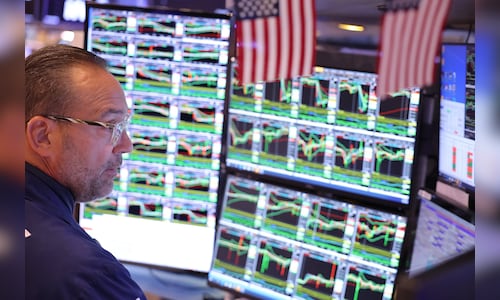| Company | Value | Change | %Change |
|---|
The Dow Jones recovered 300 points from the lows of the day to end 0.2% higher and emerge as the outperformer among its peers. The S&P 500 recovered 50 points to end above the flat line, while the Nasdaq recovered 170 points from its day’s low, but ended in the red.
Treasuries saw a rebound as a $22 billion bond sale brought a degree of relief after the recent sell-off. The 10-year ended at 4.67% after briefly topping 4.7% during the session.
All eyes are now on the Non-Farm Payrolls data which will be reported on Friday evening Indian time. US markets will remain shut on Thursday as a mark of respect to former President late Jimmy Carter. Bond markets will close at 2 PM New York time.
Citigroup said that the options market is betting on a 1.2% move in either direction for the S&P 500 post the jobs data, the biggest implied move on a jobs day since September last year.
A survey conducted by 22V Research shows only 26% of the respondents believing that Friday’s jobs data will be risk-on for the markets. 34% of them have a mixed reaction, while 40% of them expect a negative reaction on the markets.
Minutes of the recent Fed minutes showed heightened inflation risks among the members, who decided to move more slowly in the coming months to bring rates lower. Fed Governor Christopher Waller said he continues to believe that inflation will continue to move towards the 2% target.
The recent slide in stocks and bonds could worsen as traders fret over the prospect of higher inflation and interest rates, but the decline is unlikely to reach the extremes seen in 2022 when markets weathered their worst year since the global financial crisis, according to Morgan Stanley’s Mike Wilson.
The bank’s chief US equity strategist expects a choppy first half of 2025 and an improved second part of the year, he said during an interview with Bloomberg Television on Wednesday. The difference between now and then is that the Fed in 2022 was aggressively raising interest rates at a pace that is unlikely going to be repeated in the foreseeable future.
There is not as much downside for rates today “but that doesn’t mean there couldn’t be 10% downside for many stocks if rates stay at this level,” Wilson noted.
(With inputs from agencies.)

